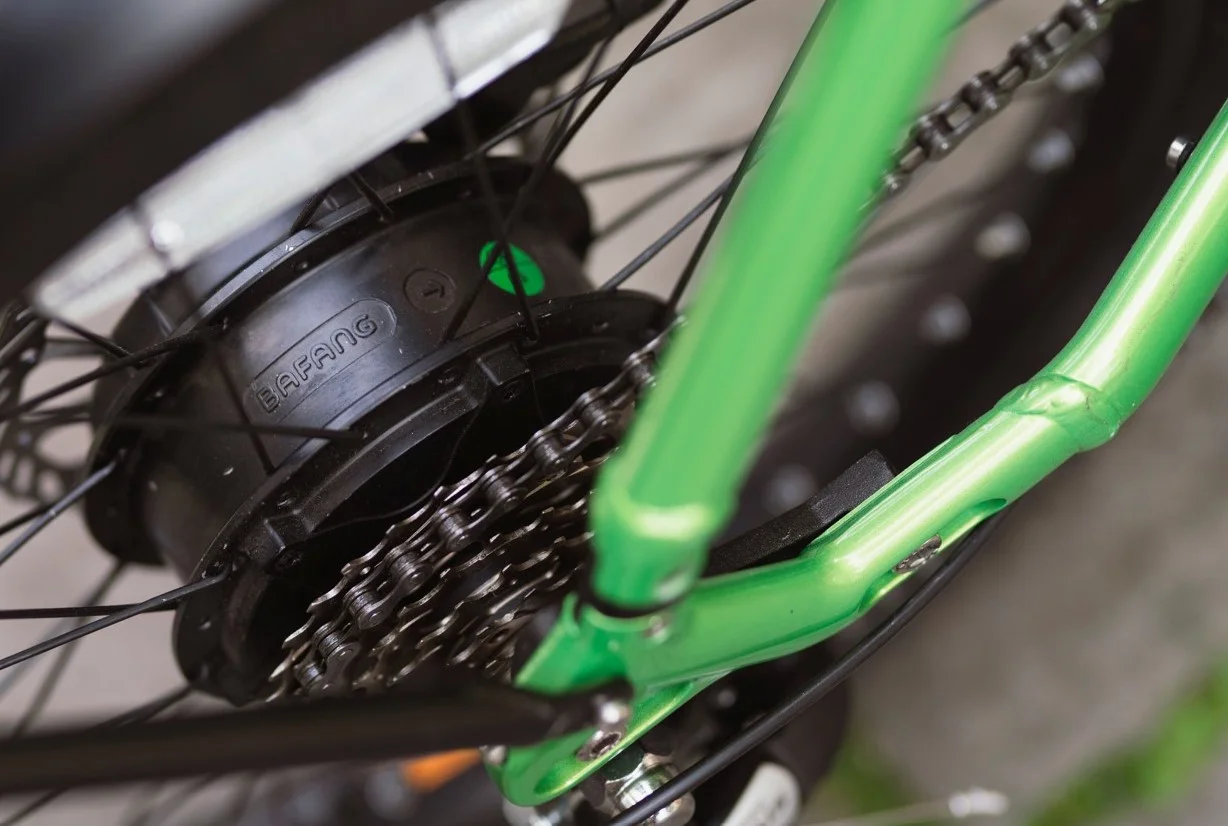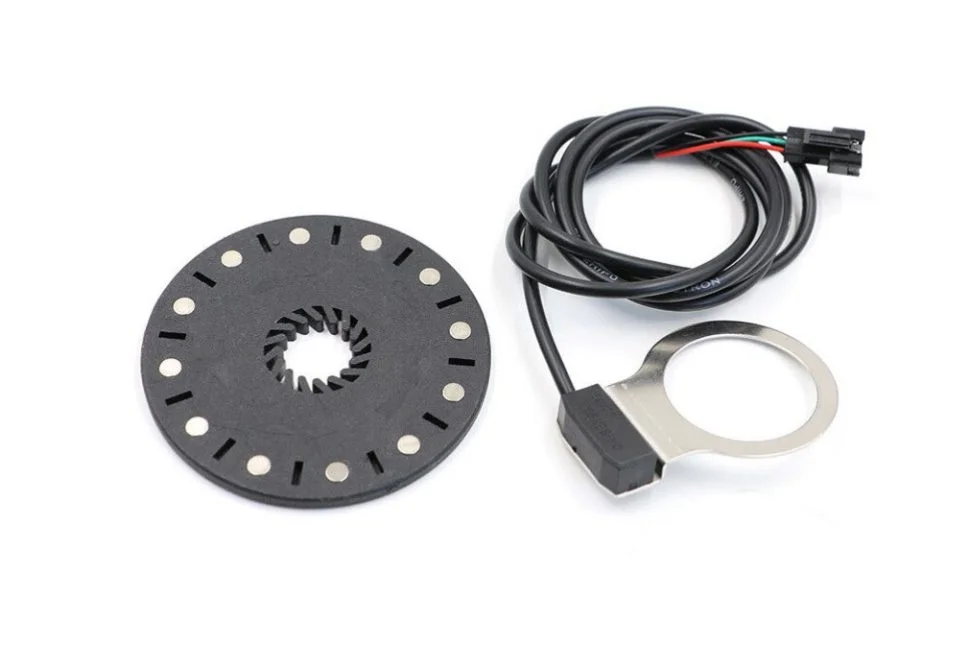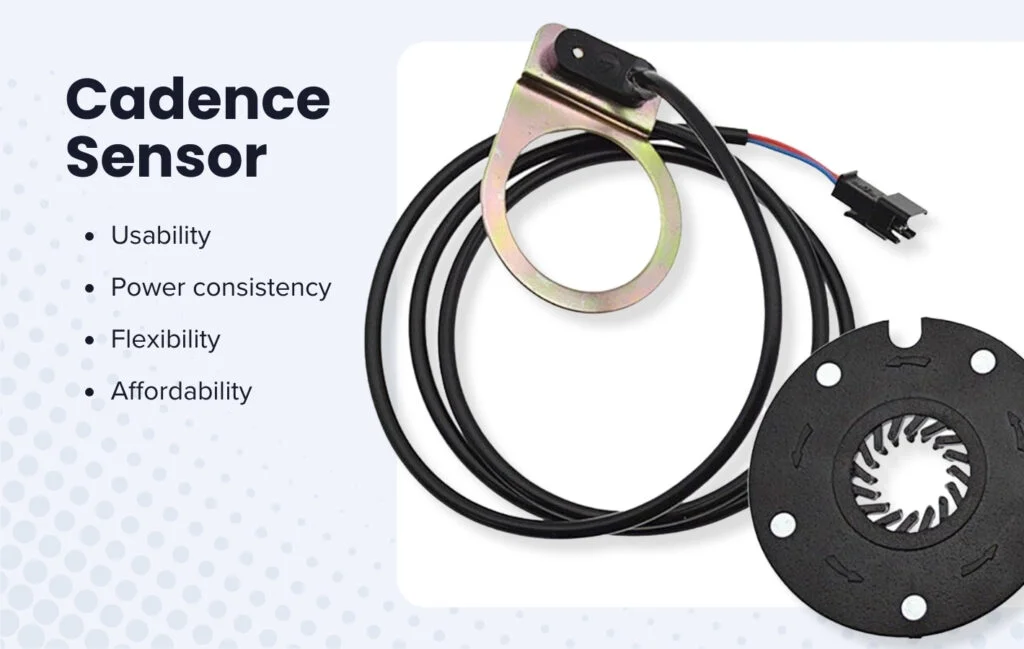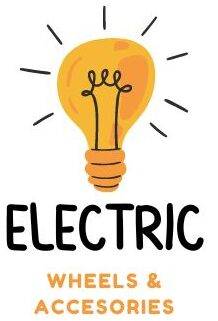E-Bike Cadence Sensor: Explained Simply

Ever wonder how your electric bike knows when to give you a little extra boost? It’s all thanks to a clever sensor called a cadence sensor.
What is a cadence sensor?
In simple terms, a cadence sensor is like a fitness tracker for your e-bike’s crank. It measures how fast you’re pedaling (rotations per minute, or RPM). This information is then sent to the motor controller, the e-bike’s brain, which adjusts the electric assist based on your pedaling effort.
Here’s the gist:
- Pedal faster, get more assist.
- Pedal slower, get less assist.
- Stop pedaling, the motor cuts off.

Think of it like an on/off switch with varying levels. It’s a good option for affordable e-bikes and perfect for riders who want a simple way to get some electric help.
Are there any downsides
Cadence sensors can sometimes feel jerky or laggy because they only react to pedaling speed, not how hard you’re pushing. This can be annoying on hills or when you want to quickly accelerate.
Looking for a more natural riding experience?
Consider an e-bike with a torque sensor. These advanced sensors measure your actual pedaling force, giving you a smoother and more responsive assist that feels more like an extension of your own effort.
Key takeaways:
- Cadence sensor: Measures pedaling speed for on/off style assist.
- Torque sensor (more advanced): Measures pedaling force for a more natural riding feel.
- Both have their pros and cons, depending on your needs and budget.

What is Torque Sensors?
Regular e-bikes are great, but what if you could get an assist that feels more like an extension of your own effort? That’s the magic of torque sensors!
How it works:
Unlike regular sensors that just track pedaling speed, torque sensors are like tiny superheroes in your bike. They measure how hard you’re actually pushing the pedals (up to 1,000 times per second!), allowing the motor to adjust its power in real-time.
The benefits:
- Smoother ride: No more jerky on/off assist. The motor responds naturally to your pedaling, making hills and starts a breeze.
- Feels more natural: You push harder, the motor helps more. It feels like you have superhuman strength!
- Better control: You have more precise control over your e-bike, making for a more enjoyable riding experience.
Why aren’t all e-bikes like this?
Torque sensors are a bit more complex and expensive than regular sensors. That’s why you’ll find them on higher-end e-bikes. In some places, they’re even required by law!
Thinking about getting an e-bike?
If you want a natural and responsive ride, a torque sensor is definitely worth considering. It might cost a bit more upfront, but the smoother and more enjoyable experience could be well worth it.
Difference Between Torque and Cadence Sensor

So, which one is right for you?
If you’re a casual rider looking for an affordable e-bike, a cadence sensor is a great choice. But if you crave a more natural and responsive riding experience, a torque sensor might be worth the investment.
E-Bike Pedal Assist: FAQs
Understanding Cadence and Torque Sensors
Electric bikes are a fantastic way to get around, and pedal assist makes the ride even better. But how does your e-bike know how much assist to give you? That’s where cadence and torque sensors come in
What is a cadence sensor?
Think of a cadence sensor as a fitness tracker for your e-bike’s crank. It measures how fast you pedal (rotations per minute, or RPM). The faster you pedal, the more assist the motor provides. It’s like an on/off switch with varying levels, perfect for those who want a simple and affordable e-bike experience.
Are there any downsides to cadence sensors?
Cadence sensors can sometimes feel jerky because they only react to pedaling speed, not how hard you push. This can be annoying on hills or when you want to quickly accelerate.
What is a torque sensor?
Torque sensors are the superheroes of the e-bike sensor world! They measure the actual force you apply to the pedals, up to 1,000 times per second! This allows the motor to adjust its power in real-time, giving you a much smoother and more natural riding experience.
What are the benefits of torque sensors?
Smoother ride: No more jerky starts or assistance!
Feels natural: Push harder, get more assist – just like riding a regular bike (but with superpowers!)
Better control: You have more precise control over your e-bike, making for a confident and enjoyable ride.
Why aren’t all e-bikes equipped with torque sensors?
Torque sensors are more complex and expensive than cadence sensors. That’s why you’ll find them on higher-end e-bikes, and in some places, they’re even required by law.
Which sensor is right for me?
If you prioritize affordability and a simple on/off style assist, a cadence sensor might be perfect. But if you crave a natural and responsive riding experience, a torque sensor is definitely worth considering, even if it costs a bit more upfront.

Leave a Reply